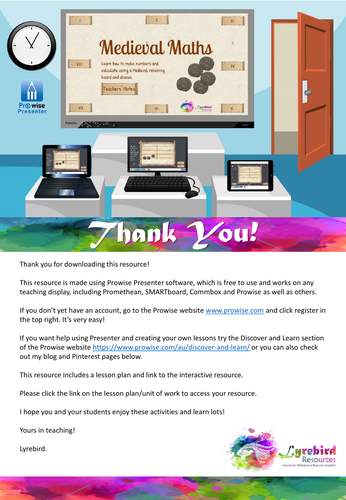










Summary:
This lesson is a great compliment to History units of work on either Tudor or European Medieval History as a Numeracy activity, or is an excellent opportunity to deepen knowledge of place value, addition and explore Roman Numerals in an Historical Mathematical context. Students learn how people calculated numbers during the Middle Ages. This interactive resource includes a starter game, an interactive timeline of the History of key Mathematical achievements, the method for calculating Medieval-style and plenary task.
Australian Curriculum Links:
Maths
Recognise, model, represent and order numbers to at least 10 000 (ACMNA052)
Apply place value to partition, rearrange and regroup numbers to at least 10 000 to assist calculations and solve problems (ACMNA053)
Numeracy General Capability
Estimating and calculating with whole numbers, Understand and use numbers in context - model, represent, order and use numbers up to five digits (Level 3)
History
Sequence historical events, developments and periods (ACHHS148)
The way of life in Medieval Europe (social, cultural, economic and political features) and the roles and relationships of different groups in society (ACDSEH008)
Continuity and change in society in ONE of the following areas: crime and punishment; military and defence systems; towns, cities and commerce (ACDSEH051)
USA Curriculum Links:
History
Interpret data presented in time lines and create time lines by designating appropriate equidistant intervals of time and recording events according to the temporal order in which they occurred.
History Standard 1b, The student understands changes in Western European societies in the age of exploration. Appraise aspects of European society, such as family organization, gender roles, property holding, education and literacy, linguistic diversity, and religion. [Identify historical antecedents]
Something went wrong, please try again later.
This resource hasn't been reviewed yet
To ensure quality for our reviews, only customers who have purchased this resource can review it
Report this resourceto let us know if it violates our terms and conditions.
Our customer service team will review your report and will be in touch.